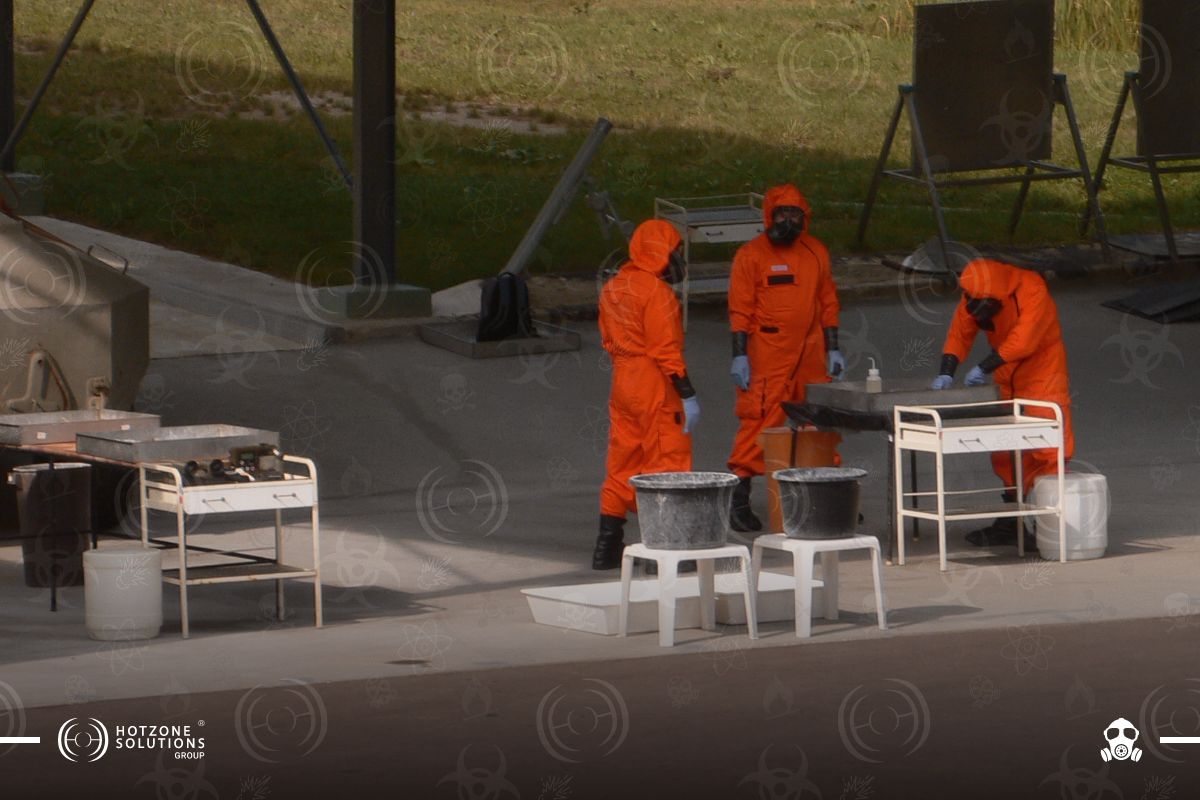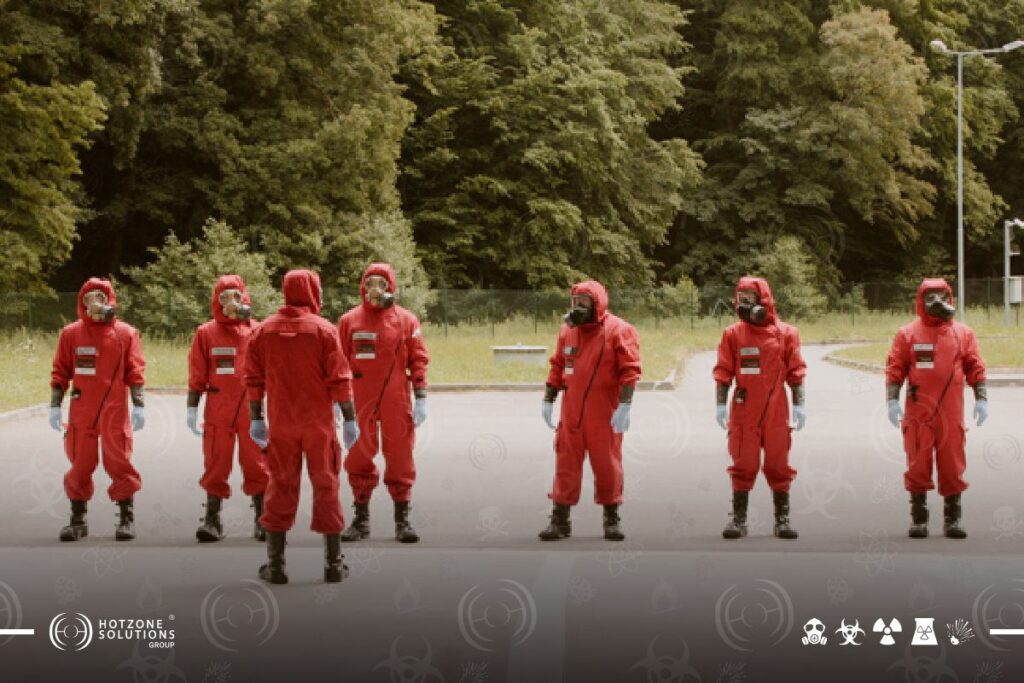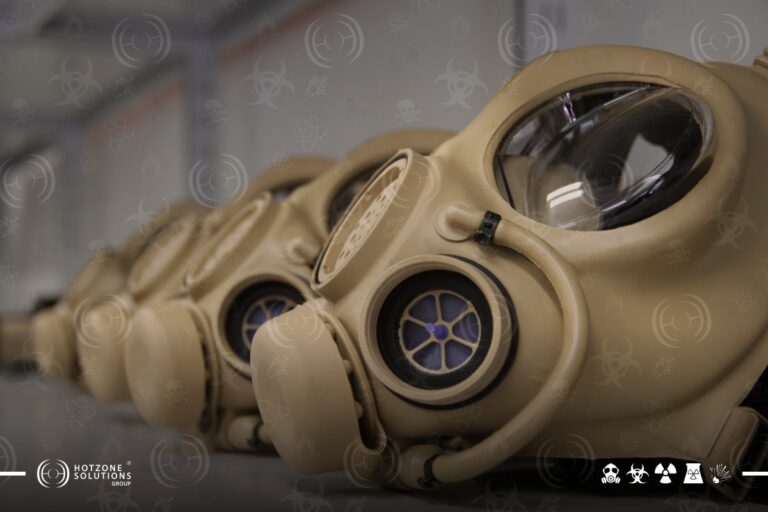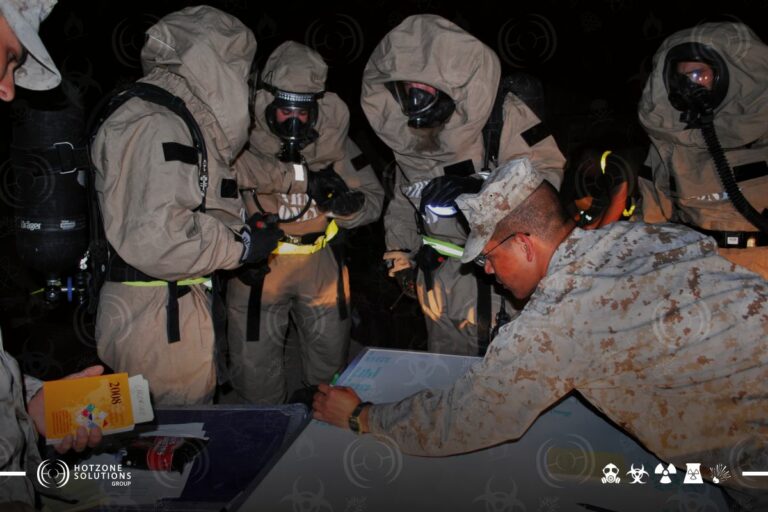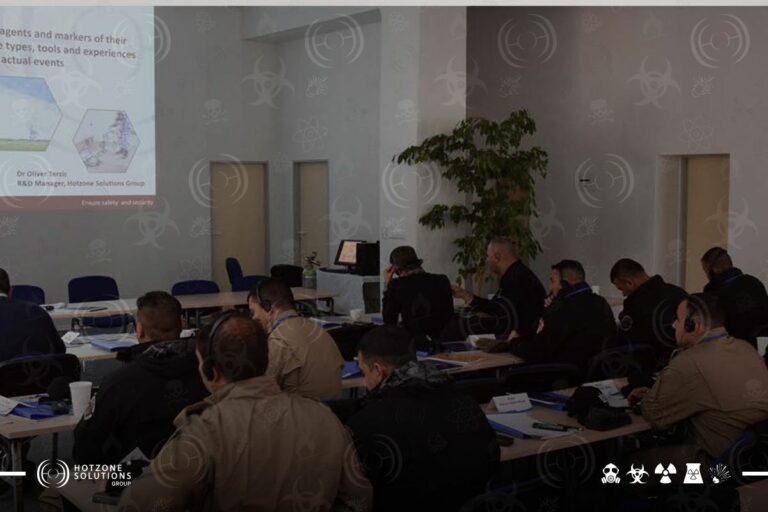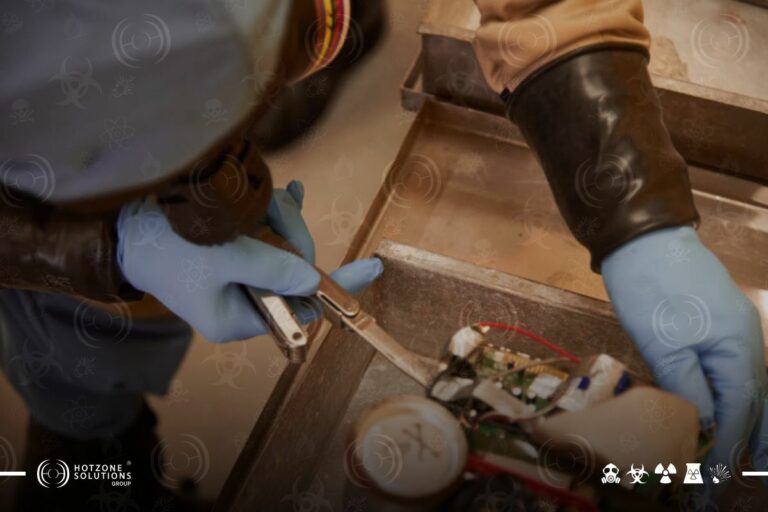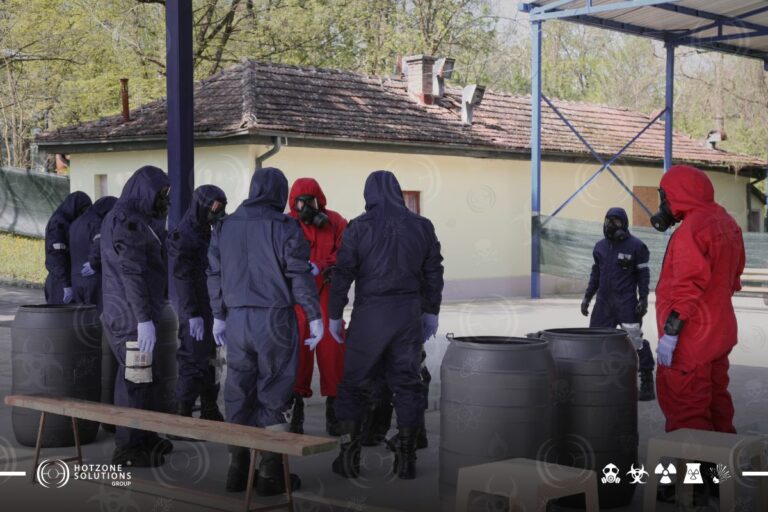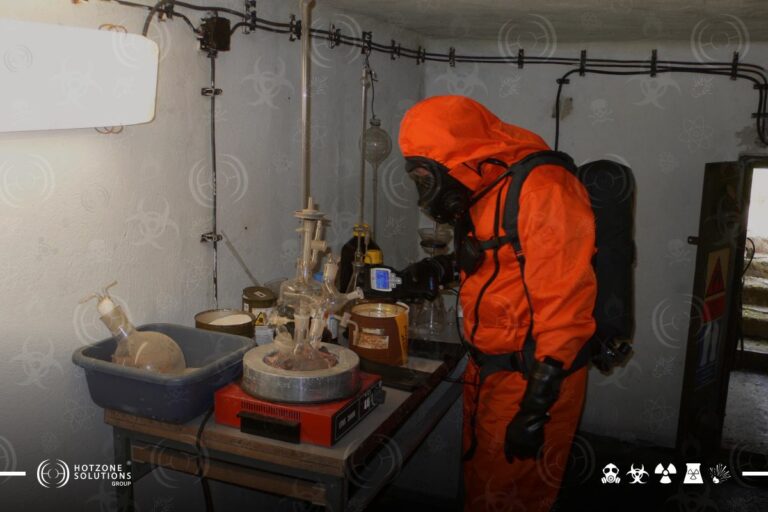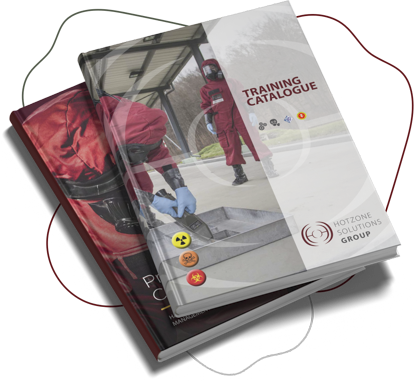Setup demos and training aids
Area to conduct sample collection with PPE
View and discuss training scenarios
- Update of responder team’s emergency chemical event procedures based on outcomes of September/October training
- Update of responder team’s capabilities and response examples
Review of Hazardous Chemical Detection and Response:
- Overview and principles of Chemical response considerations and incident scene management
- Basic chemical response detection tools (equipment list)
- Review principles of air monitoring for chemical response
Review of Personnel Protective Equipment (PPE):
- Review types of PPE
- PPE selection considerations and criteria
- Respiratory protection selection criteria: When to use SCBAs, APRs, and escape hoods
- Examples of hot, warm and cold zones for toxic chemical response
- Setting up decontamination equipment/line
- Donning Protective gear including Tychem F coverall/hood
- Respiratory protection including Avon NH15 CBRN escape hoods
- Nitrile and butyl gloves
Fundamentals and demo of chemical threat detection tools:
- LCD 3.3
- MultiRAE Lite
- Colorimetric papers
- RON Tic Card
- When to select the right detector tools (inhalation or contact hazard)
TTX #1: Use of chemical screening tools to prioritize sample collection
Hands-on General User Training with colorimetric paper and detectors
- Students are divided into four groups
- Operate the detectors tools
- Analyzing test materials with chemical screening tools
- Prioritize samples for forensic evidence
TTX #1 Collecting samples and chain-of-custody
Instructors guide participants through the process
- Participants are divided into four groups
- Collection of environmental samples using best practices (soil, water and shrapnel)
- Chain-of-custody for biomedical samples
- Use chain-of-custody, photos, seals and other documentation
- Preventing cross contamination
Participants Group #1 will demo collecting samples with hand PPE:
- Donning butyl and nitrile gloves
- Process to collect soil and water samples without cross contamination
- Process to process biomedical samples without cross contamination
Participants Group #2 will demo collecting samples with hand PPE:
- Donning butyl and nitrile gloves
- Process to collect soil and water samples without cross contamination
- Process to process biomedical samples without cross contamination
Scenario #1 Participants practice collecting samples with PPE:
- Participants are divided into teams
- Don Tychem F coverall/hood, CBRN escape respirator and gloves (if available)
- Screen samples for chemical threats
- Collect priority suspect samples without cross contamination
- Generate chain-of-custody documentation
Scenario #2 Participants practice collecting samples with PPE:
- Participants are divided into teams
- Don Tychem F coverall/hood, CBRN escape respirator and gloves (if available)
- Screen samples for chemical threats
- Collect priority suspect samples without cross contamination
- Generate chain-of-custody documentation
National Laboratory scientists and People who within the course of their regular daily duties may be required to initially respond to incidents and emergency events involving hazardous material, CBRN and WMD e.g.
- Military, Police, Fire Fighting
- Paramedics and medical staff
- Customs, air, and seaports
- Private security agencies
- Oil and gas Engineers
- Couriers and drivers
- Health and Safety Technicians
- Industrial specialists
- Military School students
- University and academic researchers of applied sciences
- Institutes Technical staff

